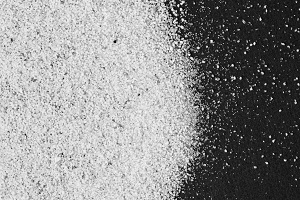
Silica: A Natural Born Killer
By Larry Simmons, Assistant Vice President
Over the past few decades, silica has received attention in the environmental insurance arena due to on-the-job exposures many contractors face.
Silica is the given name of a group of minerals composed of silicon and oxygen. It is a naturally occurring mineral and can be found in the earth’s soil. It is found in almost every region of the United States—it’s literally everywhere. There are primarily two types of silica, amorphous silica and crystalline silica, and each have very different properties. Amorphous silica is more rare than crystalline, but it can be used safely in consumer products such as cosmetic and skin care products, like foundation make-up, because of its ability to serve as an absorbent.
According to OSHA, crystalline silica is far more common, but more hazardous because it is considered a carcinogen. There are three types of crystalline silica: quartz, tridymite, and cristobalite. Of these three, quartz is the most common occurring crystalline form of silica. When working with quartz, the crystalline particles are manipulated by cutting, grinding, drilling, or sanding. Once the particles are drilled/cut/sanded down, the dust particles become airborne. THIS is where the pollution exposure lies.
Inhalation of these particles can lead to severe health problems, with the most common disease from exposure to silica being silicosis. Symptoms can begin in as little as a few weeks depending on how much silica has been inhaled. As time goes on and the symptoms progress, scaring of the lung tissue begins. People who contract silicosis also have an increased risk of other health issues including tuberculosis, lung cancer, and chronic bronchitis. Unfortunately, there is no known cure for silicosis.
Industries that have silica exposures include: construction, tunnel work, masonry, sand blasting, glass manufacturing, stone cutting, and the steel industry. Highway construction operations also have a silica exposure to not only workers on the jobsite, but to people living in homes close to the road.
One of the largest air pollution events involving silica in recent history was the World Trade Center collapse. As the building crumbled, silica particles that were in the building materials caused major concerns for first responders and clean up crews, as well as citizens that happened to be in lower Manhattan. We are still seeing claims being filed from this single event. As of 2015, the World Trade Center Health Program (specifically created to deal with health concerns of first responders at the September 11th attacks) indicated that nearly 21,000 people are being treating for conditions caused by toxic air created by the collapse of the buildings, including respiratory disease and lung cancer, both of which can be caused by the inhalation of silica.
But you don’t have to be working at a major cleanup site to be exposed to dangerous levels of silica. If you have clients that are street/road contractors, masonry contractors, general contractors, concrete contractors, an aggregate distributor, etc., do you know if their current policies cover them for silica? Addressing the concern for this one pollutant could be a huge factor in dealing with an insureds’ overall operational risks. Contact your Beacon Hill representative for more information on silica or to discuss a specific account.
Information for this article was obtained from the following sources:
https://www.eurosil.eu/what-silica
https://www.irmi.com/articles/expert-commentary/silica-the-next-environmental-issue
http://www.nydailynews.com/new-york/thousands-suffer-9-11-illnesses-14-years-article-1.2356281
Type: Blog
Topic: Silica